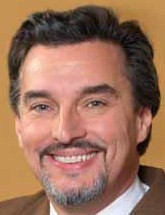Articles in the Interviews Category

Hemisphere GPS is focused on building rugged GNSS products for a variety of industries including surveying, marine and original equipment manufacturing (OEM). In the surveying industry, we manufacture a wide range of products from high-accuracy GNSS receivers to geodetic grade antennas. In addition, we offer an exclusive line of Vector GNSS Compass products for professionals heading and positioning. Our customers use these unique all-in-one compasses for everything from hydrographic surveying to yachting and dredging to autonomous machine control. On the OEM side of our business, we supply system integrators with our proprietary Hemisphere GPS technology for them to integrate into their own finished products. In fact, nearly every Hemisphere GPS finished product is broken down to its core board level and offered to original equipment manufactures for integration into their custom applications.

How is Trimble getting ready with the multi-GNSS systems scenario?: Trimble understands that our customers want to purchase receivers today that will benefit from the GNSS signals planned for the future. To keep up with these ongoing changes Trimble’s integrated circuit design team is constantly developing custom chips to be used in our receivers. With many divisions of Trimble utilizing this same core technology the economics of creating a new chip at frequent intervals makes more sense. The latest generation of receiver technology tracks the current Compass navigation demonstration system open service signals and Galileo open service under a license of the European Union and the European Space Agency.

What is the mandate of National Coordination Office for Space-Based PNT?: The mandate for the National Coordination Office (NCO) is detailed in United States (U.S.) National Policy. Our primary role is to support the National Space-Based PNT Executive Committee which convenes at the Deputy Secretary level to advise and coordinate on Space-Based PNT issues affecting multiple departments and agencies. The NCO does not make decisions or create policy. Rather, we serve as the Executive Committee’s Secretariat and execute tasks as directed by them. Specific responsibilities include interagency coordination, consensus development and issue resolution for all matters presented to the Executive Committee. As Director, I represent the Executive Committee on space-based PNT matters within the Government, the public sector, and with representatives of foreign governments and international organizations.

What has triggered the idea of National GIS?
The idea of National GIS (NGIS) has been driven by the needs of the Planning Commission, Government of India. The Planning Commission looks for lot of information which helps them in the process of planning. The need has been felt to integrate many of these information so that they can utilized effectively for various planning processes and applications.

Says, Mr. Alexander Wiechert , Business Director, Vexcel Imaging GmbH in coversation with Coordinates.The UltraCam was conceived by Vexcel Imaging prior to the acquisition of the company by Microsoft. The organization, now known as the Microsoft UltraCam product group, has a history of leading the industry by innovation.

The Indian Naval Hydrographic Department, with its rich traditions in the field of hydrography, wide ranging experience, a good infrastructure coupled with an excellent Human Resource, has the entire requisite wherewithal to be ranked amongst the best in the world. This has not happened overnight; the initial foundations have been laid by our predecessors and we who man and run the department now have been blessed by a good beginning. In the last five years, we have only added on to its already established stature.

According to the report……, “Despite significant growth since 2006, significant untapped potential remains.” Would you like to elaborate on this?
According to the forecast based on available information sources and which involved several market experts, the global GNSS revenues are still expected to grow at a double digit CAGR in the 2010 – 2020 period. This growth will come from both new applications and expansion of current products and services. In terms of penetration, the biggest impact will come from LBS since GNSS is still only in a small portion of today’s mobile phones. Regarding new applications, there are countless examples such as ADAS (Advanced Driver Assistance Systems). As for GNSS R&D initiatives in the context of the EU 7FP program of the European Commission, being delegated to the GSA, there is a surge of GNSS technology projects proposing creative applications such as using combined radar and satellite navigation technologies to create maps of coastal areas. Advances in EGNOS and Galileo will accelerate these developments.

says Matthew M O’Connell, CEO, President and Director, GeoEye
From 2006 to 2010, it has been quite a journey for GeoEye. What were the highlights of this incredible journey?
It’s hard to believe how far we’ve come. Just 7 ½ years ago, GeoEye had 60 employees generating $9 million per year, and our equity was worth …

Says, Dr Dru Smith, Chief Geodesist of NOAA’s National Geodetic Survey while explaining the GRAV-D project
What is the GRAV-D project?
GRAV-D stands for “Gravity for the Redefinition of the American Vertical Datum”. It is a multi-year project designed and led by the National Geodetic Survey (NGS). GRAV-D was initiated to measure and monitor …











 (5.00 out of 5)
(5.00 out of 5)